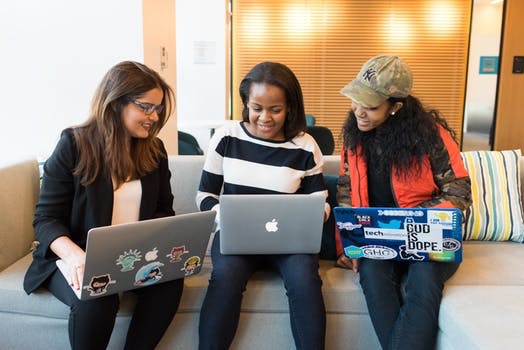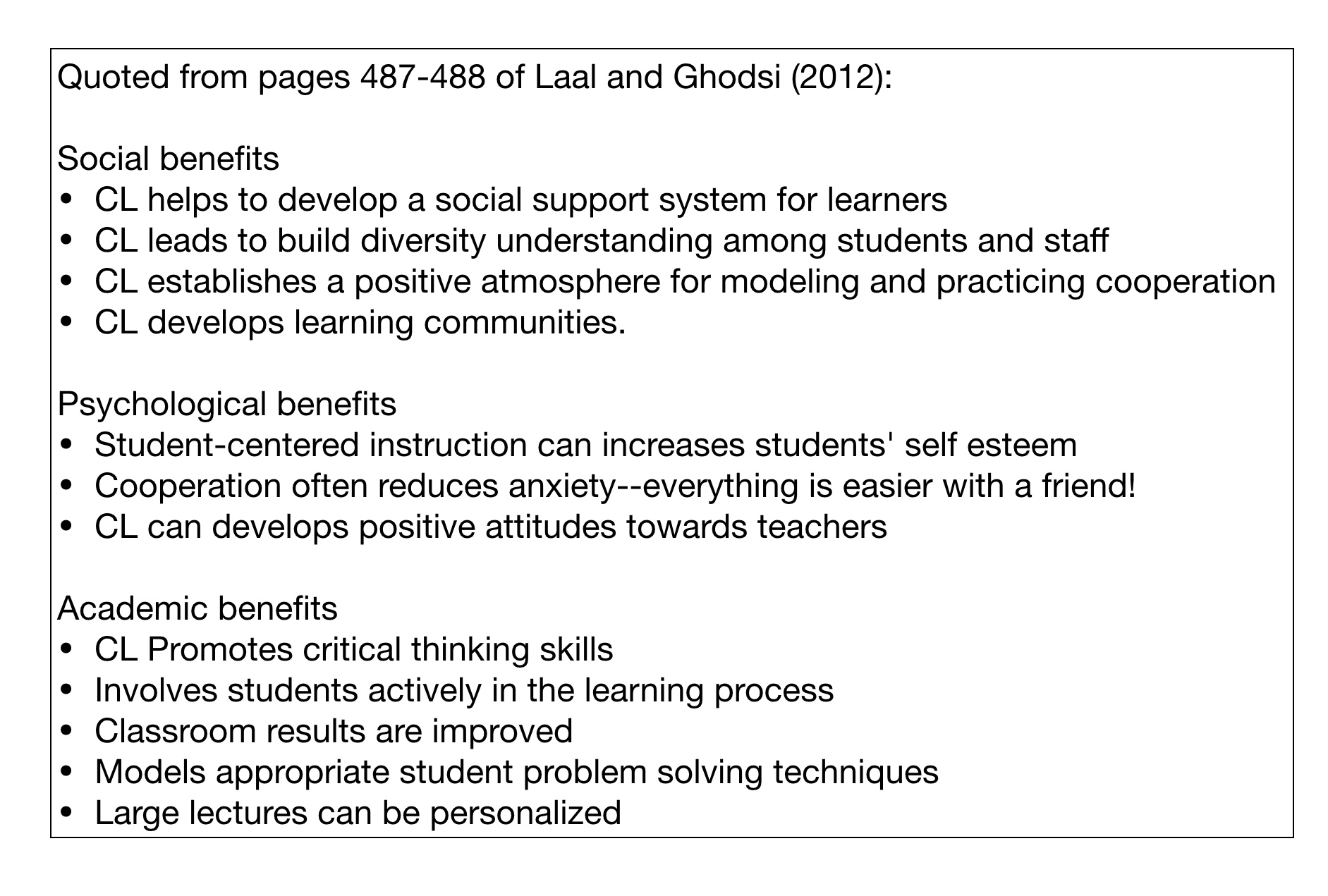By Sarah Hampton

Collaboration. We all know that means working together, and we all know it’s an educational buzzword with a positive connotation. It’s one of those words that I kind of gloss over when I see it in a paper or blog. My brain kind of does this disengage thing like, “I get that concept. It’s old news. Moving on.” Well, you know when you ask your students if they fully understand a concept, the infamous question, “Does that make sense?” and they answer, “yes,” and you know they don’t? I didn’t fully get the concept of collaboration; I was doing exactly what my students do, saying “yes” and moving on. As I read this summer, I learned that collaboration may be something we talk about often, but there’s a lot more there than I thought. I know I’m definitely not ready to move on!
What is collaboration, exactly?
In the book, What do you mean by collaborative learning?, Pierre Dillenbourg humorously points out that, “When a word becomes fashionable – as it is the case with “collaboration” – it is often used abusively for more or less anything.” So what is it, exactly? At its core, collaboration is two or more people working together, but this can be deceptively simple. For example, collaborative learning shouldn’t be confused with cooperative learning in which students work together by dividing up tasks between team members and working independently. In collaborative learning, students must be mutually engaged in a “coordinated effort to solve the problem together.” Furthermore, merely asking students to “work together” is not enough to lead to positive learning outcomes, so teachers must be intentional about identifying and facilitating effective collaboration. (Tips for that in a minute!) On the other hand, students who are effectively collaborating may not even be in the same room together thanks to modern technology. I like how Mary Burns says it in Edutopia’s blog, 5 Strategies to Deepen Student Collaboration:
“In collaborative activities, we want to ensure that students don’t just occupy the same physical space but that they share an intellectual space—that they learn more, do more, and experience more together than they would alone.”
Why collaborate?
I knew collaboration was supposed to be good for learning, but I was surprised to see the number of documented benefits. In the Benefits of Collaboration, Laal and Ghodsi (2012) discuss collaborative learning (CL) and organize the results from multiple studies into social, psychological, and academic categories:

How can cyberlearning help?
I suspect what teachers (including me) have often called collaboration didn’t really hit the mark, and maybe we haven’t recognized collaboration when it was happening in other situations. Let’s take another look at a cyberlearning project we’ve talked about before to learn what’s going on during effective collaboration. Check out this post on Speech-Based Learning Analytics for Collaboration (SBLAC) to learn more about the project. In this video, the leader of SBLAC, Cynthia D’Angelo, talks about things teachers can look for during collaboration.
In your own classroom, you can look to see if everyone in a group is contributing to a new understanding or if one person (or a small number of the group) is doing the work. Good indicators include seeing group members verbalizing about what is confusing or talking through what makes sense. Making thoughts visible to others (e.g., saying what you are thinking or sharing in writing, a sketch, or a model) is a very important indicator that collaboration is occurring. You could even make your own rubric or checklist for what you are looking for as you walk around when groups are working together. Sharing this rubric or checklist with your students might help them collaborate better.
In the near future, I hope to see more projects like SBLAC that automatically code these indicators. It would be much more efficient to allow technology to streamline that process so we could focus on giving our students targeted interventions at optimal times.
What do you think? Did anything about the specifics or benefits of collaboration surprise you? Would you say you frequently use true CL activities or are you hoping to facilitate more for your students? Would you be excited or intimidated to use a tool like SBLAC in your classroom? How do you know if students are working well together? Leave us a comment–we would love to collaborate with you as we come to a better understanding of CL together!
I would like to give a special thank you to Judi Fusco for her time and endless patience as she recommended readings and discussed collaboration with me. Because of her, I experience the value of collaboration firsthand.
How to cite this work
CIRCL Educator posts are licensed under a Creative Commons Attribution 4.0 International License. If you use content from this site, please cite the post and consider adding: "Used under a Creative Commons Attribution 4.0 International License (http://creativecommons.org/licenses/by/4.0/)."
Suggested citation format: [Authors] ([Year]). [Title]. CIRCLEducators Blog. Retrieved from [URL]
